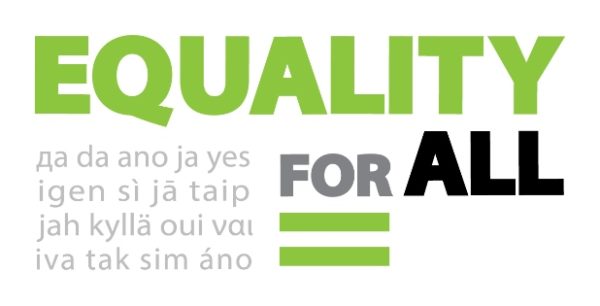Equality for all: A Directive known by many names
One may think that the Article 19 Directive, the Horizontal Directive, the Anti-Discrimination Directive, and the Equal Treatment Directive are different laws. As a matter of fact it is many names for one and the same piece of legislation proposed by the European Commission in 2008. It is supported by the European Parliament and Social Platform to ensure equality for all.
The table below shows the wide gap in EU protection against discrimination in employment, education, goods, services and social protection, on the grounds of religion, disability, age and sexual orientation.
| Grounds/ Field | Race | Religion | Disability | Age | Sexual orientation | Gender |
| Employment & vocational training | Yes + Equality body | Yes | Yes | Yes | Yes | Yes + Equality body |
| Education | Yes + Equality body | No | No | No | No | No |
| Goods & services | Yes + Equality body | No | No | No | No | Yes + Equality body |
| Social protection | Yes + Equality body | No | No | No | No | Yes + Equality body |
Member states has for almost seven years now made up excuses to why they cannot ensure EU wide protection against discrimination in all areas of life and on all grounds protected by the Lisbon Treaty Article 19. They blamed the proposal for being unclear in terms of scope and the price tag to high. The latest excuse is that they cannot decide about the ground of disability because the EU has not yet presented its proposal for an Accessibility Act. These are not sufficient excuses: Equality is an investment and not a cost and the EU is bound by the UN Convention on the Rights of Persons with Disabilities and should therefore ensure its implementation through EU law.
The Equality Networks: the European Network Against Racism, the European Disability Forum, AGE Platform Europe, European Youth Forum and ILGA-Europe are closely monitoring the negotiations on the Directive to ensure that the compromises do not stretch beyond what is acceptable.
Equinet Europe, has collected vast evidence of discrimination outside employment across the EU that serve as answers to why equal treatment law is needed. Among the cases is the girl that can not participate in school because of lack of transport. The girl with head scarf being refused access to education and the women with head scarf refused health care and housing. The older person being refused health care insurance and credit cards. The LGBT patient being denied treatment if not tested for HIV and the visually impaired person that is denied to enter a health care facility with their assisting dog. Same-sex couples that are refused housing and access to bars and cafes. The person with wheelchair being refused to go with their partner to a restaurant and the grandfather who was asked to leave the celebration of his grandchild because of his assistant dog.
As known for many, Germany is the member states most opposed to the directive. Much has to be done to raise awareness about why the directive is important for EU citizens. Even if German citizens may have sufficient protection within its own territories, they may face discrimination when moving to another EU member states with less protection. The Equality Networks urge European civil society as well as national NGOs to show its visible support for the directive. The logo on the the top of this blog is a tool for all to use to display in favor of Equality For All.
President Juncker, Vice-President Timmermans and Commissioner Jourova has all promised to commit to make progress to unblock the Council negotiations for the adoption of the Directive. We welcome their words and await to see their actions.














































